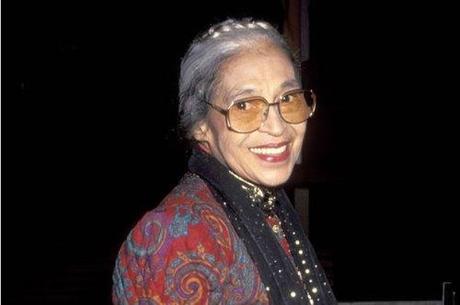OK friends let’s see how much history we know. I’ve been watching this show on the “History” channel called
“10 things you may not know about”, and I’ve got to tell you I’ve come across some surprising things. Let’s take this one on Civil Rights today.
Take Our PollOn the afternoon of December 1, 1955, 42-year-old African American Rosa Parks, returning home from her job as an assistant tailor at a Montgomery, Alabama, department store, boarded bus 2857 on the Cleveland Avenue line. When told to give up her seat for a white man, she refused and was arrested for violating the city’s racial segregation laws. Her act of civil disobedience precipitated the 13-month Montgomery Bus Boycott, which was led by Martin Luther King, Jr. On the 100th anniversary of the February 4, 1913, birth of Parks, explore 10 surprising facts about the civil rights activist.

Getty Images- Rosa Parks
1. Parks was not the first African-American woman to be arrested for refusing to yield her seat on a Montgomery bus.
Nine months before Parks was jailed, 15-year-old Claudette Colvin was the first Montgomery bus passenger to be arrested for refusing to give up her seat for a white passenger. (Parks was involved in raising defense funds for Colvin.) Three other African-American women—Aurelia Browder, Mary Louise Smith and Susie McDonald—also ran afoul of the bus segregation law prior to Parks. The four were plaintiffs in the Browder v. Gayle case that resulted in the Supreme Court ruling bus segregation unconstitutional.
2. Parks was a civil rights activist before her arrest.
Parks was a long-time member of the Montgomery chapter of the National Association for the Advancement of Colored People (NAACP), which she joined in 1943. At the time of her arrest, she was a secretary of the local NAACP chapter, and the previous summer she had attended a workshop for social and economic justice at Tennessee’s Highlander Folk School. Her political activism continued through the boycott and the rest of her life.
3. Parks had a prior encounter with James Blake, the bus driver who demanded she vacate her seat.
In 1943, Blake had ejected Parks from his bus after she refused to re-enter the vehicle through the back door after paying her fare at the front. “I never wanted to be on that man’s bus again,” she wrote in her autobiography. “After that, I made a point of looking at who was driving the bus before I got on. I didn’t want any more run-ins with that mean one.” After the written order from the Supreme Court outlawing bus segregation arrived and the Montgomery Bus Boycott ended on December 21, 1956, one of the newly integrated buses that Parks boarded to pose for press photographs happened to be driven by Blake.
4. Her act of civil disobedience was not pre-meditated.
Although Parks knew that the NAACP was looking for a lead plaintiff in a case to test the constitutionality of the Jim Crow law, she did not set out to be arrested on bus 2857. Parks wrote in her autobiography that she was so preoccupied that day that she failed to notice that Blake was driving the bus. “If I had been paying attention,” she wrote, “I wouldn’t even have gotten on that bus.”
5. Parks was not sitting in a whites-only section.
Parks was sitting in the front row of a middle section of the bus open to African Americans if seats were vacant. After the “whites-only” section filled on subsequent stops and a white man was left standing, the driver demanded that Parks and three others in the row leave their seats. While the other three eventually moved, Parks did not.
6-10 HERE
~Steve~

